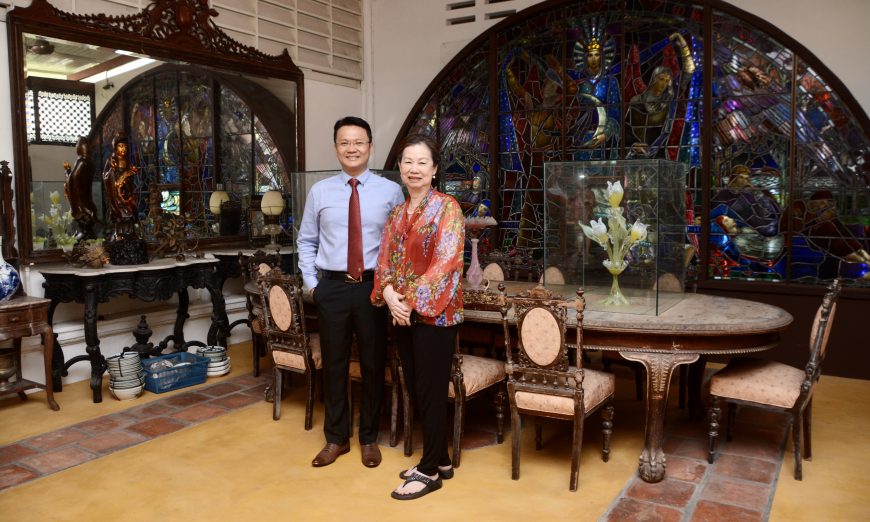SEVERAL museums have sprung up in Penang in recent years. Ironically, one of them that is of top-notch class seems to draw more foreign tourists than locals.
It is none other than the Colonial Penang Museum.
Located at No. 7 Jalan D.S. Ramanathan in Pulau Tikus, the museum occupies a two-storey bungalow that is being leased out to the Ma family by the state government.
The museum is one of a kind, housing antique furniture, stain glass windows, priceless ornaments and artworks, among others, that show the opulent lifestyle of the famous merchants in Penang and the British administrators.
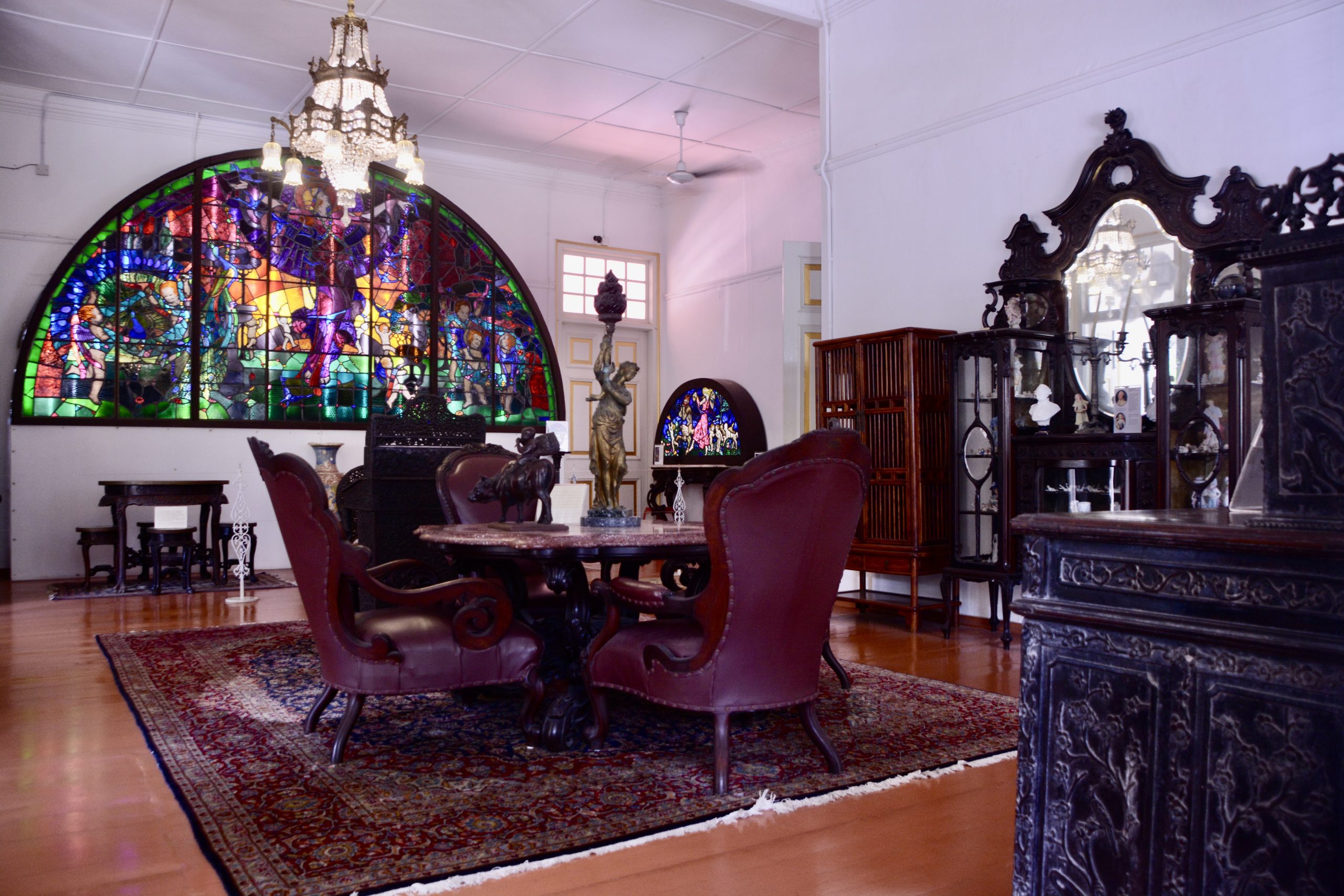
Never did it cross the mind of Jasmine Tan that she and her husband, Ma Chin Hwa, would one day operate the museum when she started to be an antique collector over 50 years ago.
“I was about 20 years old when I began collecting small items, piece by piece. It grew until I had no place to put them.
“The then Chief Minister (Lim Guan Eng) encouraged me to show them in a museum to the new generation or else they would not know the lifestyle of the past.
“At first, I never thought of doing it on such a big scale. I just wanted to display them,” recalled Tan, who is also passionate about horse racing.
Tan and Ma, who are now less active in their quarry business, said they had spent RM3 million to renovate the building in 2013 before opening for business in 2015.
There are over 1,000 artefacts in the museum.
Visitors are provided a guided tour and a knowledgeable guide like Alvin Wong can walk them through the homes of the rich merchants at that time.
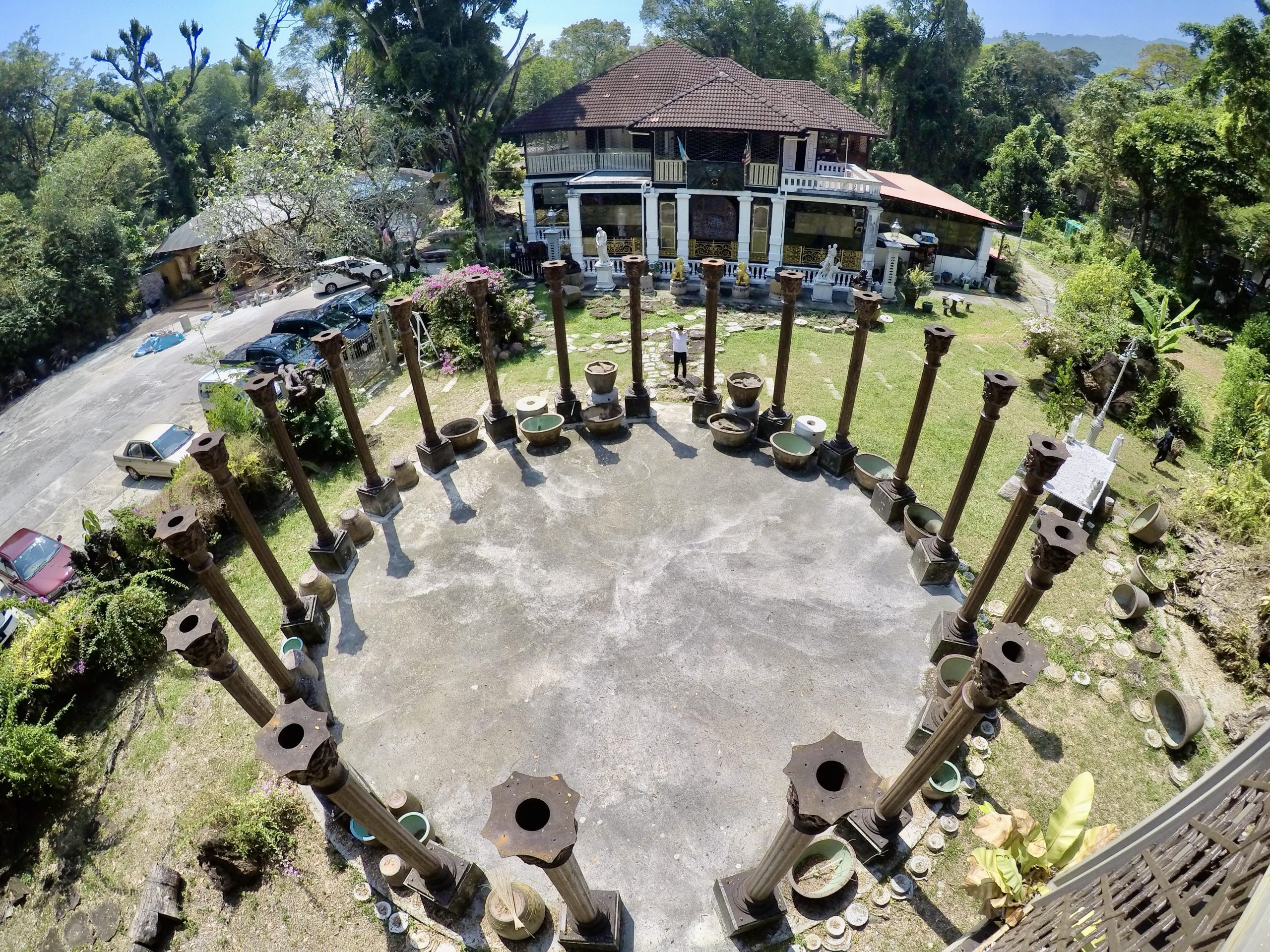
As you enter its compound, you will be greeted by 22 pieces of Roman pillars which were made of cast iron.
In the colonial days, Wong said, such pillars were put in front of the wealthy merchants’ car porch to show off their wealth and impress visitors.
Standing near the pillars is a tree house, which visitors are welcome to climb up.
It is supported by the trunk of the angsana tree that was chopped down after being struck by lightning in 2013 near the Penang Hospital.
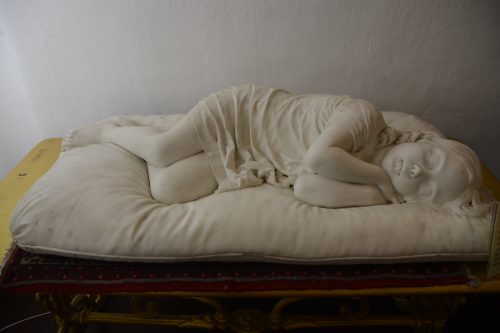
Upon entering the museum, a charming white Carrera marble statue of a girl sleeping on a pillow can catch your eye.
It was sculptured by renowned artist Atelier R. Bigazzi Florence in the 19th century.
Wong said during that time, the rich would take photographs and request their artists to carve sculptures based on their beloved’s image for remembrance.
For the little girl, Wong said he believed her father must have been captivated by her sweet sleep that he sent his photograph to Bigazzi to sculpture it on a piece of Italian white Carrera marble.
The folds of the pillow are so well sculptured that the pillow looks real.
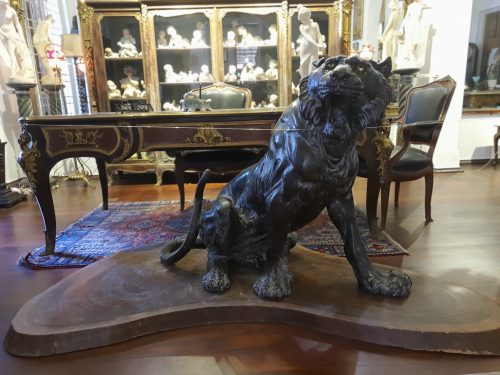
Another interesting item displayed is a sailing ship which was made of thousands of cloves.
Cloves were very rare in the 17th and 18th centuries and were worth their weight in gold.
“The Chinese merchants in Penang bought cloves home then, not to eat but to use them as decoration.
“They used a needle to piece through each clove and joined them together. Those days, the clove ship was considered a golden ship but today, it is worthless as cloves are very cheap,” Wong explained.
Prominently displayed is a tiger statue which Wong said was made in Japan with five types of metal – gold, silver, bronze, brass and alloy.
Only gold was used to insert into the eyes of the tiger statue during the cooling process
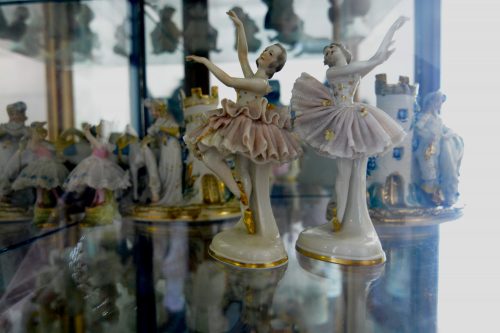
A collection of porcelain baby dolls is placed in cabinets.
Those days, the merchants would buy the dolls, made in Germany, to give to newly married couples.
The Chinese, Wong said, believe that if the wife kept looking at the dolls, she would one day be able to conceive and bear a child who would look as beautiful as the baby dolls, if not prettier than them.
Ballerina dolls are on display too. They are very expensive as they are very difficult to make.
There are several gorgeous stained glass windows, which depict non-religious subjects.
They were created by famous Irish artists such as Kathleen Quigley, Hurbert McGoldrick and William Morris, who could take probably three to four years to complete each painting.
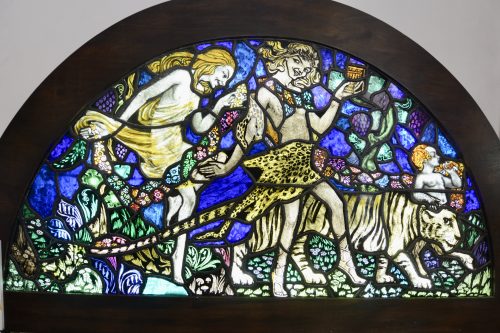
A plain cabinet made during the Ming Dynasty in China stands proudly on the upper floor of the bungalow.
Made of huanghuali, the most expensive wood in the world today, the cabinet was constructed without using nails but instead using wood joint method.
As the huanghuali is nearing extinction, it is now a protected species.
The Chinese term, huanghuali, literally means “yellow flowering pear” wood.
“The more you rub the wood, the more shining it becomes. We’ve not treated it (cabinet). It is natural wood,” Wong said.
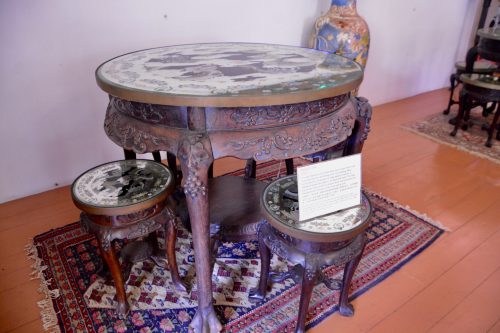
Baba Nyonya items are naturally dear to the museum owner as Tan herself is a Baba Nyonya descendant. She has a table and chair set used for Baba Nyonya weddings.
Made in China in 1910, they were topped with Venetian glass etched with a pair of dragon heads and a pair of phoenix tails designs.
During the wedding, the groom and bride were not allowed to sit together. One table is round in shape for the groom and the other is oval for the bride.
The round table is slightly higher by an inch to symbolise that the man would take control of everything (those were the days) while the oval table symbolises fertility for the women because it looks like an egg of a woman.
Tan also has a bed and an exquisite dressing table handed down from her mother. They are placed in the museum too.
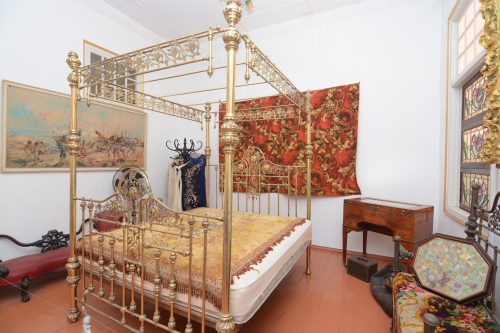
At one section on the upper floor, visitors can see a photocopy of a letter written by Captain Francis Light, the founder of Penang.
The original document, dated July 28, 1794, is kept by the museum owner as it is fragile and needs preservation.
The document is placed on a marble table made in the shape of the Penang island by C. Lazarus Co, renowned cabinet makers of Calcutta, in 1800s.
A few metres away hangs a rectangle framed lighting with six bulbs.
Although they were made in 1920 by Philips company from Holland, five of the six bulbs are still able to light up today.
The frame, made of bronze, together with the bulbs were made for the royal family in France to play billiards.
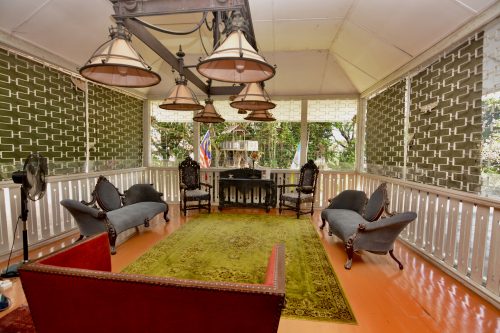
A poker table which once belonged to David Brown, who owned vast swathes of land in Penang and was famous for his cultivation of nutmeg in the state in the 18th and 19th century, has also landed in the museum.
Its chairs are so heavy that they have ceramic wheels.
He had a mansion in Penang Hill, which has been turned into a restaurant, known as David Brown’s Restaurant and Tea Terrace.
Furniture belonging to another famous personality, the late Sir Hussein Hasanally Abdoolcader, can also be seen in the museum.
The museum also has several items from Eu Tong Sen, the founder of Eu Yan Sang, such as marble tables, benches, fountain and bathtub.
Tong Sen was a leading businessman in Malaya, Singapore and Hong Kong in the 19th and early 20th century.
His items were collected from his mansions in Ipoh, Kuala Lumpur and Singapore.
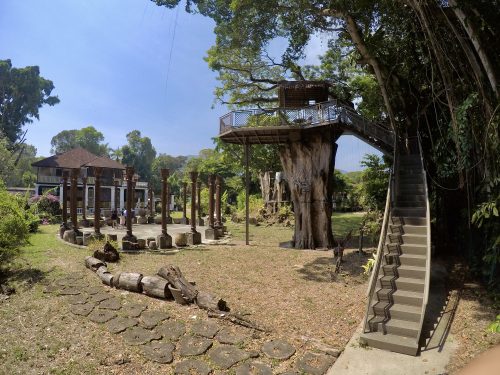
There are many other interesting items on display, such as an ancient ship captain’s table, a non-electric fan made in 1860 in Chicago, an electric fan made in 1920 in Neutrack, Holland, a quality piano made in 1905 by Francois Linke, and a hand crank sewing machine made in England.
There are also a specimen of the Bird of Paradise, a painting by Indonesian artist Didik, some beautiful chandeliers, two reverse paintings by William Morris, crystal flower vases, old gramaphone, water barrels, porcelain water filter (made by Charles Stableline in 1884), dowry basket, a kapitan hat and a harpsichord (a mixture of a harp and piano made in 1750 in Copenhagen).
The youngest collection at the museum is a 40-year-old telephone booth made by Guinness in Ireland which has a cassette compartment and a radio that is still working very well until today.
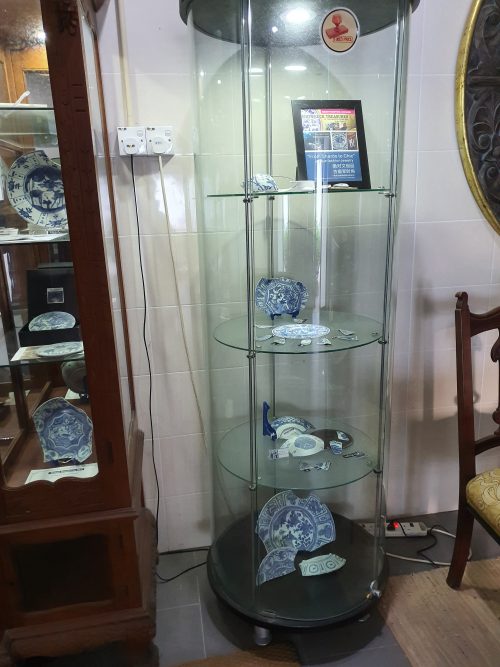
Towards the end, visitors will pass through a gift shop. Some of the items for sale here were recovered from the “Desaru” ship, a Chinese vessel which sank off the coast of Johor in 1830s with a cargo of ceramics.
State Tourism Development, Arts, Culture and Heritage Committee (PETACH) chairman Yeoh Soon Hin, who recently visited the museum, has only words of praise for the Ma family and museum.
“This a very good museum with a lot of artefacts. The collections are precious. They reflect the way some of the wealthy merchants lived during colonial times,”Yeoh said.
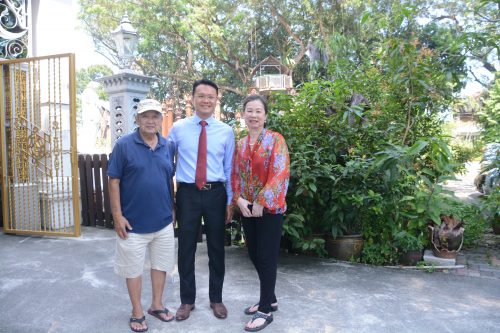
The museum operates from 9.30am to 5.30pm daily, with the last tour at 5.15pm. Tickets, inclusive of guided tour, are priced at RM30 for adults and RM15 for children (12 years and below).
The tour may last over an hour but for those who love art, culture and heritage, it is definitely worth the money and time.
Story by K.H. Ong
Pix by Law Suun Ting

